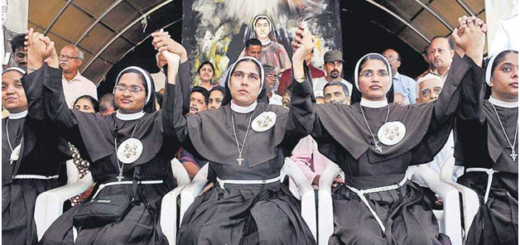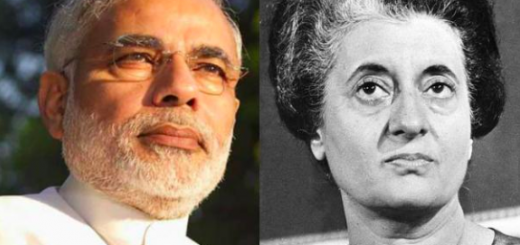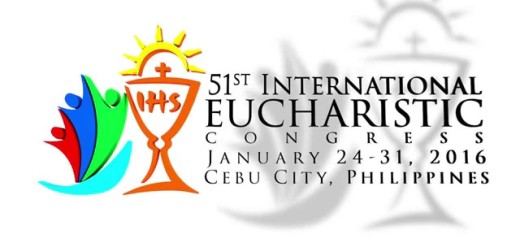Where is Transparency in the church? Syro-Malabar Catholics deserve to know the truth

By Christopher Joseph,Kochi
UCANIndia
April 11, 2019
As Bishop Manathodath takes a confidential report to the Vatican, murky dealings become clearer.
Look at the photo above. It is a typical sight of a Syromalabar church celebration and procession. “Birds of the air…foxes on earth.. Son of man has no where to rest his head.” “Those who wish to follow me must take up their cross first and follow me….”
These people also are carrying crosses, only they are gold and silver crosses decorated in costly attire and their high priests dressed in silk and satin and pompous finery and at times with garlands of 100 rupee notes, nothing that reminds one of the “poor church for the poor” of Pope Francis.
Poor or Constantine’s Church?
All reminds one of a triumphant Church of Constantine, where no life style comparable to that of the Cattle Class of Jesus riding an Ass to the “Hosanna” cries ever possible, since everything depicts the pharisaic triumphalism spoken in Mt.23, 1-8?
The report below speaks of the utter lack of transparency in the Church, just the opposite of “I have spoken from the house tops” of Jesus. The report is from UCANIndia which describes itself in the following lines:
UCANIndia News?
“UCAN, the Union of Catholic Asian News, is the most trusted independent Catholic news source in Asia, reporting news from, about or of interest to Asian Catholics.UCAN has more than 200 commissioned or casual (stringers) writers and reporters. It has 65 full time staff and either offices or informal bureau in up to 20 Asian countries.
“Through its core news service ucanews.com, UCAN provides a modern, independent and accurate news service from our team of nearly 200 reporters and photographers in 22 countries,” with headquarter in Delhi and Christopher Joseph, in Kochi.
Land sale corruption!
The subject of discussion below, is the financial corruption in the land sale in Ernakulam-Angamalley diocese, by Cardinal Allencherry, allegedly for the purpose of raising funds for a Medical college. Others mentioned in the report are Administrator Bishop Manathodath, Father Paul Thelakat, Father Joby Maprakavil etc. Since crores of rupees belonging, not to any bishop or Cardinal, but to the faithful, the writer argues they have a right to know details discussed in court.
How to speed up settling cases?
In so many other cases, involving Clerical Sex-abuse starting from 26 year old Abhaya case to the present Franco Mulakkal to Kadadapa’s bishop Gallela, already resigned and so many other cases, no case is getting settled or made public for the faithful, who have a right to know.
As in the cases of Chile, Indian Church too is becoming one of the most discredited church in Asia with monstrous crimes by priests and bishops. Since clericalism with all its flaws of near total lack of communication with the faithful and coverup of clerical crimes, nothing is going to move fast in the Indian Church. What steps do you suggest to get things move fast? james kottoor, editor CCV.
Please read below UCANIndia
repott on people’s Rght to know
A senior bishop of the Eastern-rite Syro-Malabar Church is visiting the Vatican with a “confidential report,” a month after its preparation entangled him in a criminal case. The content of the report that Bishop Jacob Manathodath submitted to the Vatican early this month remains unknown to other bishops, including the Synod of Bishops, the Syro-Malabar Church’s supreme decision-making body.
That should be a worry for the 46 serving bishops of this self-governing church based in India’s southern state of Kerala, which entertains history with memoirs of factionalism.The confidential report is not about factionalism, for a change. It explores allegations of controversial land deals and financial irregularities faced by the church’s head and major archbishop, Cardinal George Alencherry.
The report follows a Vatican mandate. When the allegations hit, Pope Francis removed Cardinal Alencherry from the administrative roles of Ernakulam-Angamaly Archdiocese and appointed Bishop Manathodath as apostolic administrator last June. Bishop Manathodath was also asked to submit a confidential report directly to the Vatican after engaging independent auditors to study the financial deals.
Soon after taking charge, Bishop Manathodath engaged two teams for audit. One was the internationally known auditing firm KPMG, while the other was comprised of Catholic experts and churchmen. The content of these two reports, just as the bishops’ report, remains a mystery to the larger public.
The preparation of his report for the Vatican, away from the stalwarts of the church, has been tough for Bishop Manathodath, as developments in the past few months have shown. On Feb. 25, Bishop Manathodath was named the second accused in a criminal forgery case filed on behalf of the church’s synod. The first accused was Father Paul Thelakat, a senior priest of the Ernakulam-Angamaly Archdiocese.
But news of the complaint did not emerge until mid-March when media began reporting it. The secrecy was important, as we will see later.The complaint said the priest had forged some bank documents and that Bishop Manathodath presented them to the synod in January aiming to defame the cardinal. The complainant was a junior priest, Father Joby Maprakavil, working in the church’s headquarters who had no access to synod proceedings.
But no one could understand why the synod, always convened in camera, should go to police about something that happened inside it. Equally baffling was how certain documents presented in private could have tarnished the public image of the cardinal.
When media began to discuss it, the church’s media commission head Bishop Joseph Pamplany said in a March 18 statement that the synod did not intend to complain about the clergyman. The synod decision was to get police to investigate the source of the forged documents, and it entrusted Father Maprakavil with its responsibilities, the statement said.
But the chronology of events would show the complaint was not inadvertent, nor was the naming of the two accused accidental.
Police records would prove that Father Maprakavil first filed a written complaint on Jan. 18, naming Father Thelakat and Bishop Manathodath. But police did not accept it because, lawyers say, there were not sufficient grounds to file a criminal complaint based on the petition of a third party who was neither present at the scene of the crime nor directly affected by it.
Later, on Jan. 25, the priest complained before the Judicial Magistrate. The complaint again named the two accused. He also named Father Thelakat as the person who created a bank account in the name of the cardinal and forged bank statements. Police documents show his oral complaint was read out to him, he heard and he signed a statement confirming they were his own words. Claims of mistakes would not hold water as the names were repeated several times in an hours-long process.
Then the complaint was forwarded to the local police station of the synod headquarters on March 8, but the complaint did not include Bishop Manathodath’s name.Media began reporting the story on March 17 based on the complaint forwarded to the local police station without realizing that the original complaint also named Bishop Manathodath. But later police explained it as a clerical mistake and added the bishop’s name on March 20.
Cardinal Alencherry on March 22 wrote to major superiors and provincials of the church saying he did not know how Father Thelakat and Bishop Manathodath were named in the petition, which sought to arrest those who forged the documents. He also promised to petition police to exclude their names and assured he would file a new complaint against “unknown” people who forged the document.
If including Bishop’s Manathodath name was inadvertent, the bishops who were behind the complaint could have removed it any time between January and March 20. We haven’t seen any such effort. Police would not normally accept such a complaint from an unaffected third party unless someone at the “top level” of state administration had exercised power, say lawyers connected with the case.
So, why all these struggles? Planning and scheming appear to be behind this case, however puerile these actions might be.
Bishop Manathodath was not aware of the case against him unit March 20, when a copy of the original complaint was presented to him, according to a lawyer acting for the bishop.
It was news to him. “He was shellshocked to see that a criminal case exists against him,” the lawyer said. This happened despite his being a member of the Permanent Synod and visiting church headquarters and attending officials’ meetings several times from January to March. No one told him about the complaint including his name.
The January synod knew Bishop Manathodath was scheduled to visit Rome in April. A criminal case could have protracted effects on his travel plans and presentation of his report.First, he could have traveled without being aware of the case. If that had happened, the chances of being detained at the airport by the investigating officer were high. His trip to Rome would not happen. Another bishop could then have taken over the task of reporting to the Vatican.
Lawyers want us to consider another scenario of Bishop Manathodath traveling to Rome without police intervention. When he is in the Vatican, news about his forgery case could be released, sending a clear message. The person presenting the report is untrustworthy. He is accused in a forgery case.
Moreover, the investigation could then accuse him of absconding. The Vatican would then be compelled to move him from his current position.
But that would not be the case. Accidentally or otherwise, the cat was out of the bag. Bishop Manathodath came to know about the case two weeks before his trip to Rome. However weak, the message has been given to the Vatican: the person presenting the report dabbled in forged documents and his report cannot be believed.
How did Bishop Manathodath travel without hassles?
His lawyers filed another petition on March 29 pleading the innocence of Bishop Manathodath and Father Thelakat. It said synod officials were complaining against those who forged the documents. Father Thelakat handed over the documents to Bishop Manathodath, who in turn gave them to the cardinal. It was the cardinal who presented them to the synod, the petition said.
Their petition also pleaded for the cancellation of legal proceedings against them.A lawyer associated with the case said it would have been “risky” for Bishop Manathodath to travel unaware of the case against him and without filing a counter-petition.
The five million Catholics of the Syro-Malabar Church, who continue to contribute to its growth, have a right to know the truth about these developments. The bishops should stop being a liability to Catholics who live in a multireligious milieu.
Christopher Joseph is the bureau chief for ucanews.com in India.

















